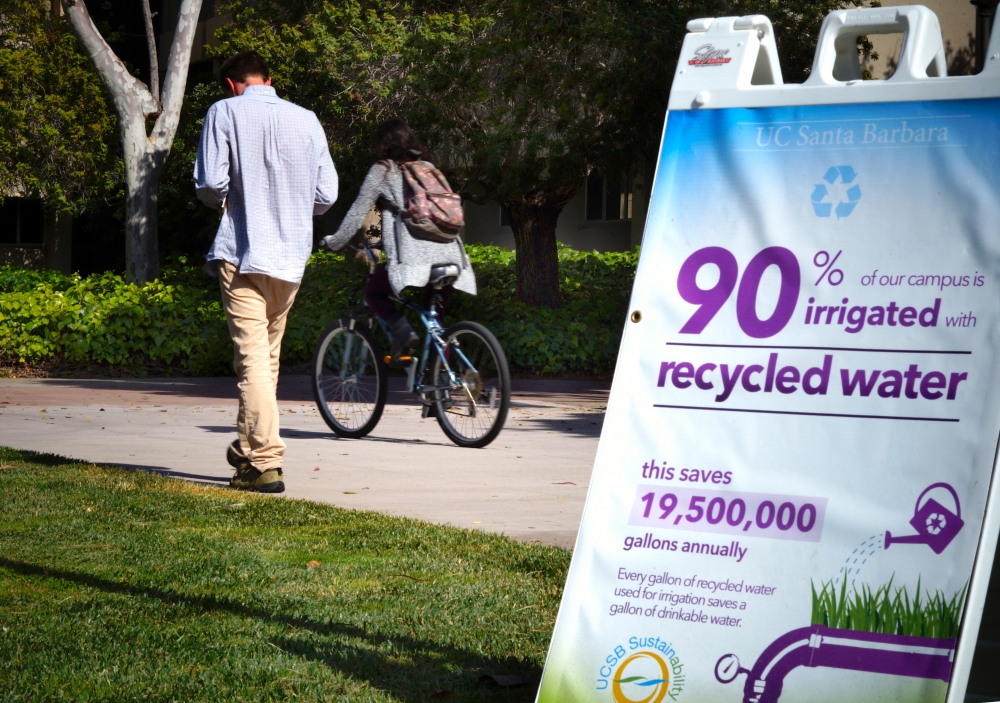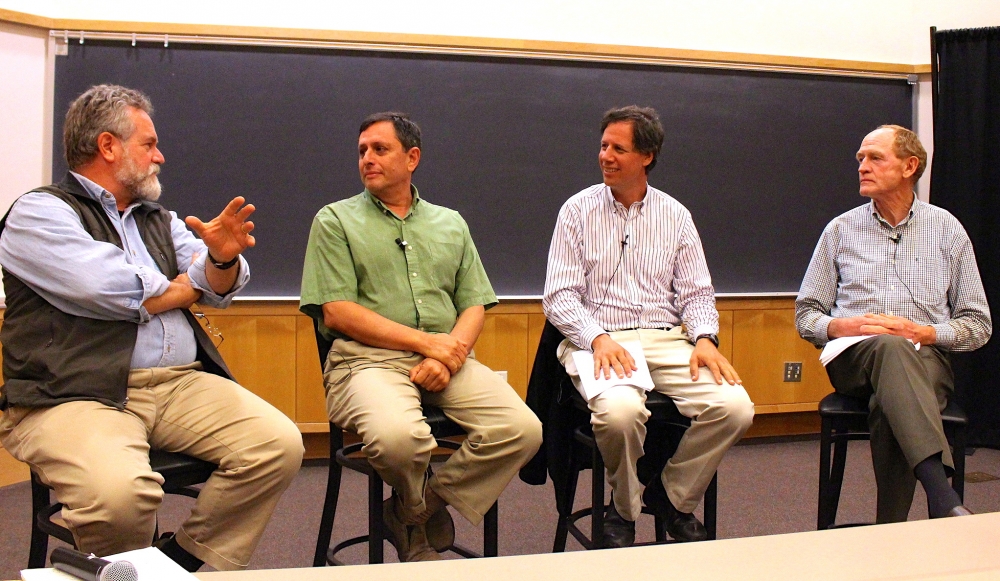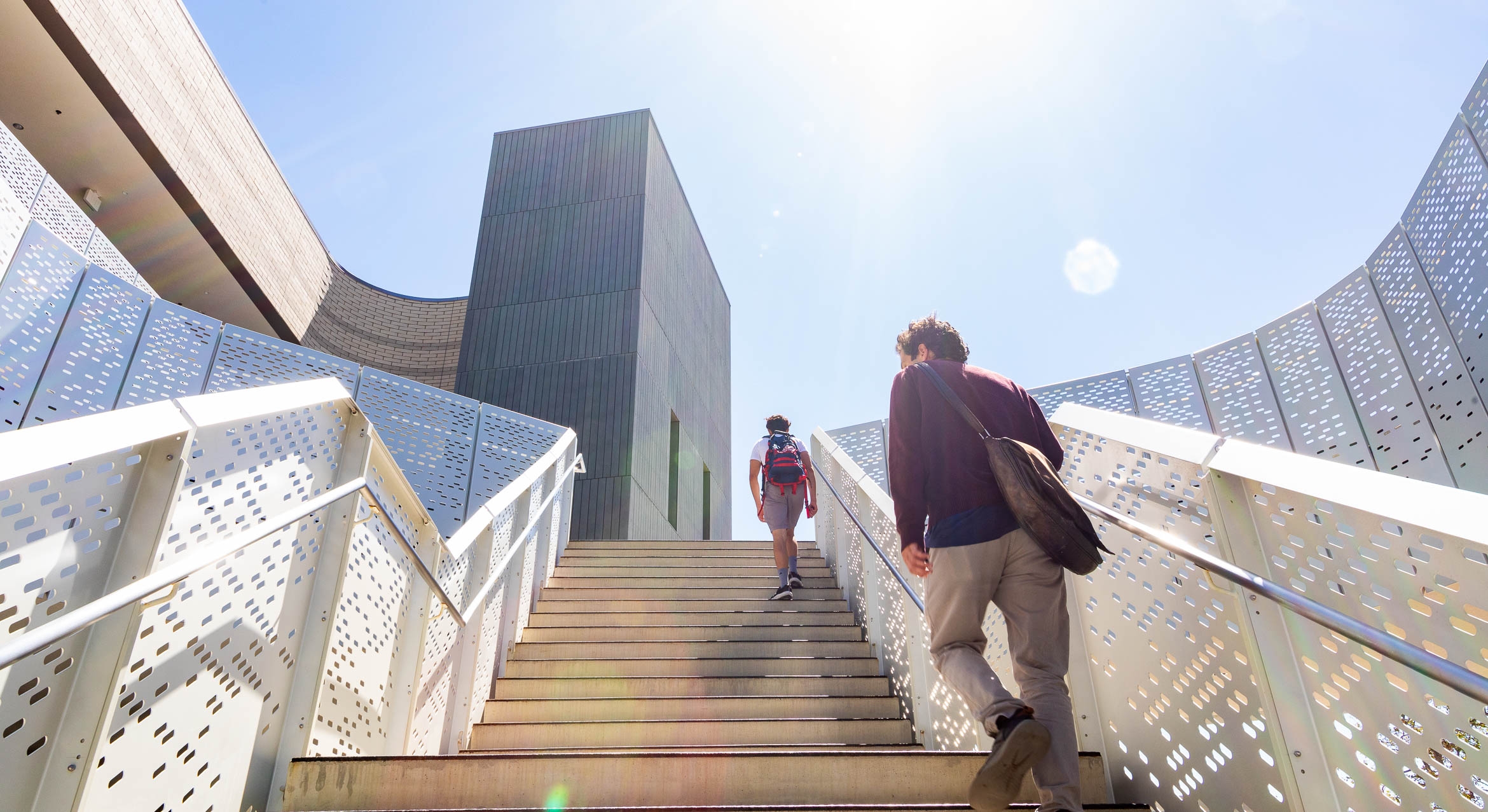Drought Yet to Become Reality for Many
If the current drought continues into next year, water shortages throughout the state could become a reality. Even so, and despite constant media attention, there are no strong indicators, economic or otherwise, regarding impending shortages, according to Gary Libecap.
Audience members came to hear Libecap, the Donald Bren Distinguished Professor of Corporate Environmental Management, and a panel of faculty members from UCSB’s Bren School of Environmental Science & Management discuss issues related to water use and the effects of drought in California.
“Many communities are saying they’ve got at least two years of water supply, so don’t worry,” said Robert Wilkinson, associate adjunct professor at the Bren School and a water policy specialist. “Montecito indicated that they have two months’ but cutting back on irrigating lawns wasn’t really an appealing option. So Montecito has a challenge to sort through and that is the case throughout most of the state.”
With California state water at its lowest allocation in history, the snowpack at 18 percent of its average and reservoirs at half their normal levels, shortages are around the corner, according to the scientists, but people continue to think of water as a limitless resource. The national average for individual water use is between 60 and 100 gallons per person per day. Goleta is at 66 gallons per person per day; Santa Barbara at 86; and Montecito at 290.
“We could learn a lot from more arid states such as Arizona,” said Libecap, who is also a professor of economics at UCSB. “They’re way ahead in water management.”
He pointed to the tiered water pricing structure used in Tucson, which offers an affordable rate for basic service but tacks a high premium on usage over and above that. In response, Tucson residents have moved toward landscaping that incorporates native desert plants that require little water. Phoenix, on the other hand, uses a flat rate water system, and with little incentive to reduce water usage its landscaping is lush and green.
In California, agriculture accounts for 80 percent of water use, with the remaining 20 percent going to urban areas. “If we can cost-effectively improve efficiency, we should do it regardless of what agriculture is doing,” said Wilkinson. “It looks like we could go on the order of 50 percent improvement in urban areas at current cost effectiveness. That’s fixing leaks, changing plumbing fixtures and a lot of outdoor irrigation improvements. Right now, we’re recycling 10 to 15 percent of the water in the state — showers to flowers — but we can do better than that.”
The panel members spoke in response to questions from host Jim Bond, a student in Bren’s Master of Environmental Science & Management program, who coordinated the event. They covered a lot of territory, from groundwater recharging and pricing to water rights, infrastructure and ecosystems impacts.
Desalination was addressed briefly but downplayed as a current solution because it is not yet cost-effective. “There are a lot of very interesting technical developments in the desalination area,” said Bren visiting lecturer James Salzman, the Samuel F. Mordecai Professor of Law and Nicholas Institute Professor of Environmental Policy at Duke University. “I wouldn’t be surprised if 15, 20 years from now things look very different.”
A question-and-answer session gave audience members an opportunity to participate in the discussion. They asked about conservation and efficiency, harvesting rainwater, water from the Colorado River aqueduct, water use in the California’s Central Valley, constitutional prohibitions against wasting water, how drought will affect food prices and whether this drought is the new normal.
“This could be the new normal,” said Arturo Keller, Bren professor of environmental biogeochemistry who specializes in water-quality management at the watershed level. “We have to plan for the short-, medium- and long-term.”
An important step would be acknowledging the fact that water is a finite resource, and then adjusting community behavior to reflect that reality, Wilkinson noted. “We can do much better with water use,” he said. “Doing that gives us energy benefits, emission reduction benefits, ecosystem restoration benefits.
“We’re getting more thoughtful about integrated solutions — the kind of stuff we try to work on here at Bren that leads to some thinking that’s quite different,” Wilkinson added. “It’s not just survival but doing things smarter and better to build resilience and a more sustainable future. I think that’s where our focus ought to lie.”





